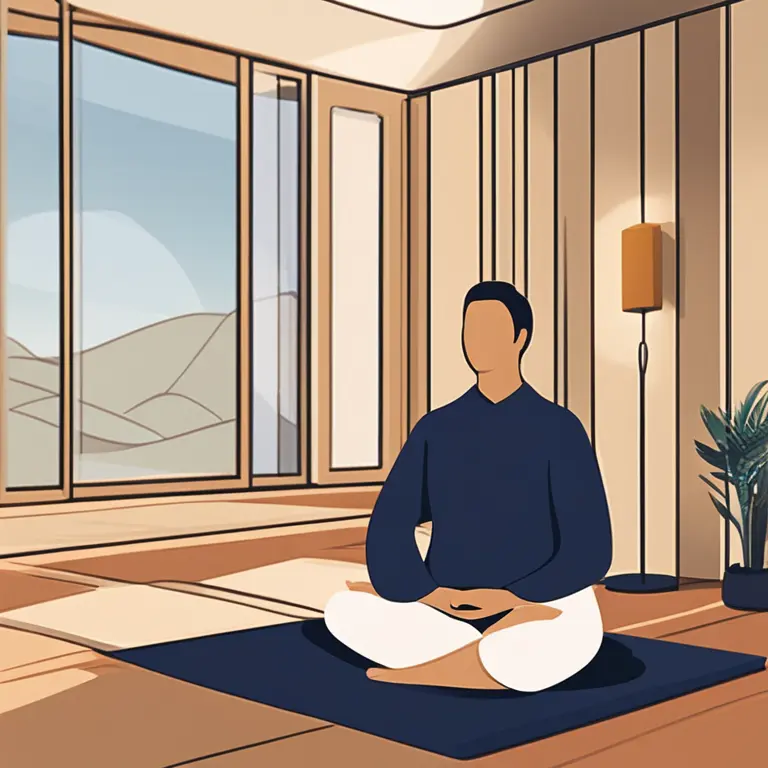
The Locus of Meditation: Inner Journeys in Contemporary Practice
Uncover the diverse spaces where meditation occurs, both physical and metaphysical, and their significance in modern spiritual practice.
article by Hina Kurosawa
The Essence of Meditation Spaces
Meditation, the time-honored practice of inner attunement, transcends the bounds of any singular location. It can unfold in a myriad of environments, from the archetypal calm of a secluded retreat to the quiet corner of a bustling city apartment. In contemporary times, meditation has been warmly embraced across the globe, and practitioners frequently seek spaces that resonate with tranquility and personal significance. As we journey through different meditation venues, we discern that the true essence lies not merely in the physicality but also in the cultivated atmosphere of mindfulness, accessibility, and comfort these spaces provide.

Traditional Meditation Venues
Historically, meditation took root within hallowed grounds such as temples, monasteries, and sacred natural sites. These locales provided a conducive environment for deep introspection and spiritual connection. Today, these traditional spaces still offer strong energy fields due to their timeless association with contemplative practices and are often sought after for guided sessions, retreats, and community meditations. Their architectural and geographic designs are frequently synonymous with peace, enabling a communal and yet intensely personal journey into serenity.

Home Meditation Sanctuaries
In the digital age, home meditation sanctuaries have emerged as indispensable fortresses of solitude. The modern meditator crafts a private sanctuary to filter out life's incessant cacophony. With the advent of remote work and increased time spent at home, personal meditation spaces have become as much a reflection of one’s identity as they are havens of stillness. Elements like natural light, minimalistic decor, or a special cushion, are often intentionally selected to enhance the quality and depth of the practice.

Virtual Meditation Hubs
Virtual reality and digital platforms have revolutionized the way we practice meditation. Apps and online communities offer guided sessions and connect individuals irrespective of location or time zone—expanding the horizons of where meditation can take place. Many have found solace in virtual meditation rooms that simulate the tranquility of traditional meditation sites or whisk users away into immersive, serene worlds crafted by sound and vision, marking an innovative evolution in meditation practice.

Nature's Embrace
Meditation thrives amidst nature's symphony. Parks, beaches, and gardens have remained timeless locations where the elements themselves—whether the rhythmic lapping of waves or the rustle of leaves—carry meditators into deeper states of consciousness. The spontaneous meditative experience, unbound by the confines of walls, provides a grounding connection to the Earth and the cosmos, emphasizing the interconnectivity of all beings.
Meditation in Motion
Not all meditation transpires in stillness. The concept of 'active meditation' has found its rightful place in the modern lexicon of mindfulness. Walking labyrinths, engaging in Tai Chi, or practicing yoga—all forms of meditative movement—manifest the fluidity of where meditation can occur. These practices underscore the potential to transform any space into a vessel for mindfulness, provided the intent for inner calm and presence is kindled.
Published: 1/14/2024
Modified: 1/15/2024
More predictions
Come back here soon to learn more about yourself and your future


Healing Through Mindfulness: Meditation & Trauma Recovery
Mindfulness meditation offers a powerful tool for individuals seeking solace and healing from traumatic experiences. Discover how this practice can aid in the journey towards inner peace.


Easing Loneliness with Meditation
Discover how mindfulness meditation can provide solace and connection to mitigate feelings of loneliness, enhancing emotional and mental well-being.


Mindfulness Meditation Basics for First Graders
Introducing foundational mindfulness meditation practices to instill calm and focus in first-grade students.